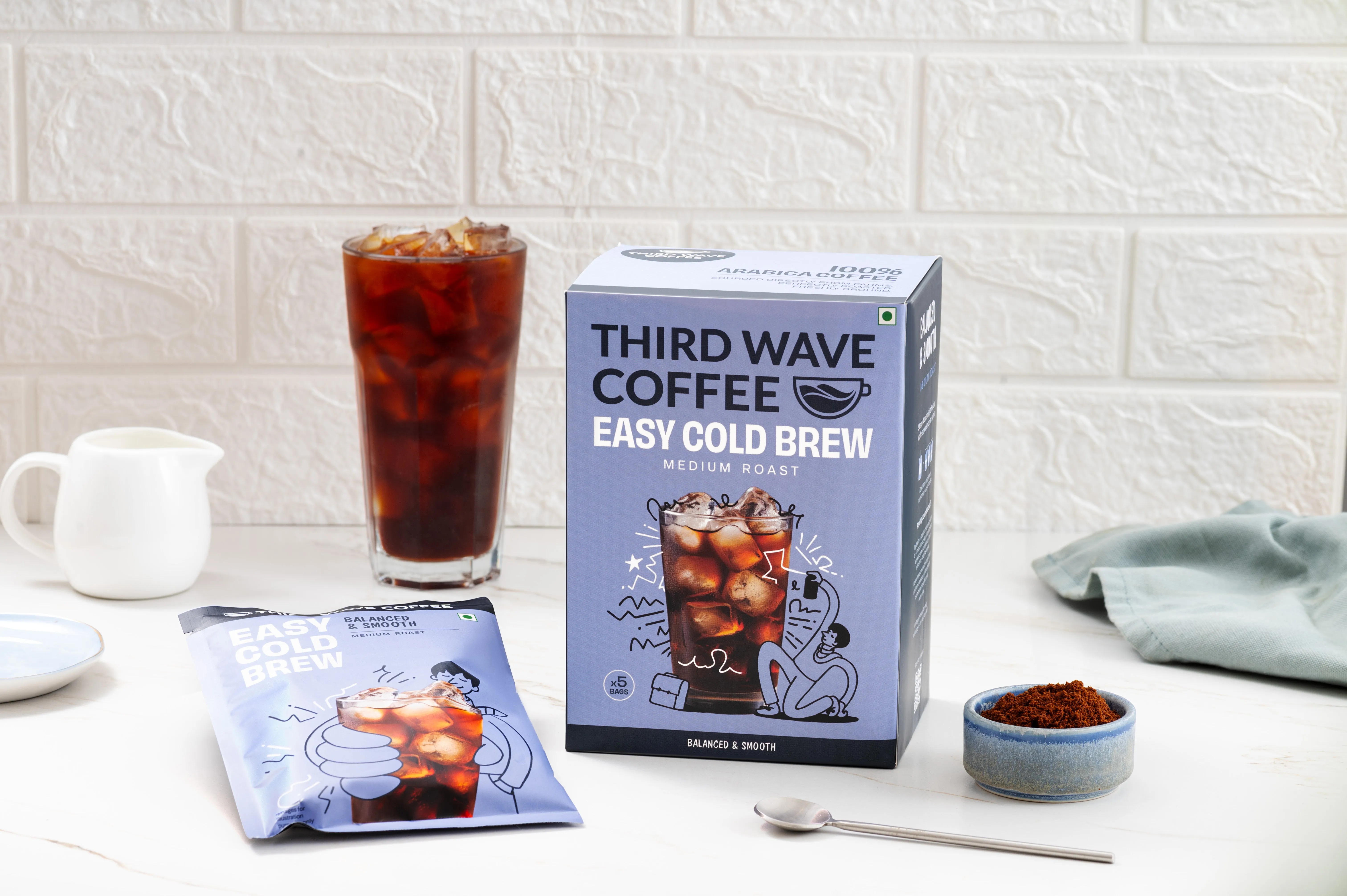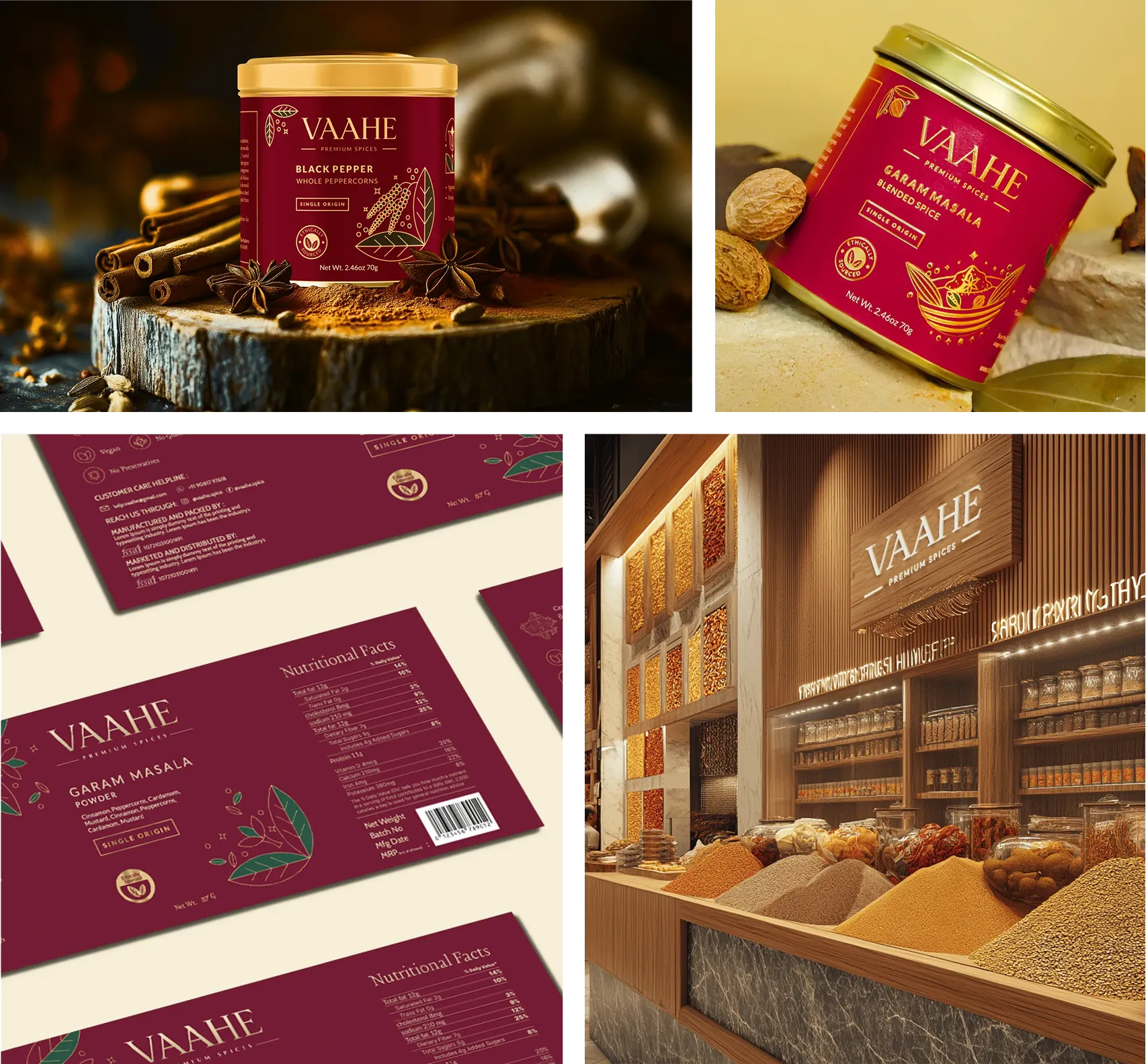.svg)
.svg)
.svg)
.svg)
.svg)
.svg)
.svg)
.svg)
Book a call and get unlimited revisions for your project!
.webp)
.svg)
To understand Third Wave Coffee Roasters, you first need to understand the idea of “third wave coffee” itself.
This global movement that reshaped how people perceive, brew, appreciate and discuss coffee.
Coffee has evolved through three distinct waves:
The First Wave was all about mass access. Commercial coffee brands pushed convenience over quality. Beans were highly roasted, often bitter, sometimes artificially flavoured, and packaged as “premium” without actually being so. Coffee was a commodity, not a craft, during the first wave.
The Second Wave brought café culture to the mainstream. This is where flavoured beverages took centre stage, caramel lattes, hazelnut frappes, vanilla mochas and much more. Baristas were passionate about café life, but not necessarily educated in beans, origins, or brewing methods. Coffee shops were lifestyle spaces, not educational ones, during the second wave.
The Third Wave is the wave that changed everything in the world of coffee lovers. This movement celebrated coffee as a craft product. Single-origin beans, transparency about farms and regions, manual brewing methods, pour-overs, latte art, roast profiles, tasting notes, all of this was born from the third wave. Baristas became specialists, origins mattered, and coffee drinkers became more informed.
.webp)
Third Wave Coffee Roasters entered India as a brand that explicitly aligned itself with this elevated culture. The name itself is a signal of intent. It pays respect to the global third wave movement and positions the brand as a leader within it, not just another café, but a contributor to coffee education.
By the time Third Wave opened its first store, India already had an established café landscape with cult favourites like Starbucks, Café Coffee Day, Barista, Costa Coffee. The category was crowded and the consumer was now matured. And yet, Third Wave carved its own space through identity, intention, and a commitment to transparency.
.webp)
At Confetti, our brand and packaging experts studied Third Wave Coffee through the lens of storytelling, category positioning, and design consistency. Here is a breakdown of how the brand performs.
The brilliance of the name “Third Wave Coffee” is its built-in meaning.
It signals craft, origin-focus, speciality coffee and knowledge.
It is not abstract, not vague, not decorative.
It stands for something very specific, and that is, a higher standard of coffee.
This gives the brand instant credibility among speciality coffee drinkers and positions it far above generic café names.
In the Third Wave design and branding, their logo features three waves inside a cup, which reflects a simple, elegant way of capturing the brand’s entire philosophy.
It’s a design that respects coffee culture subtly and humbly without seeking any attention.

When Third Wave entered the market, their design language was modern, minimal, and sophisticated, which came as a refreshing alternative to the global “brown and green café” palette. They didn’t rely on loud visuals or trendy café gimmicks. They opted for clarity, calmness and depth, which aligned perfectly with speciality coffee aesthetics.
One of the strongest parts of the brand is the packaging for their coffee beans.
Where many brands like Starbucks play into flavour-led gimmicks (“Winter Blend”, “Caramel Something”), Third Wave coffee focuses on education.
Their bags highlight:
processing method

There is no unnecessary noise or sugar-coated storytelling.
This restraint signals authenticity and aligns with what coffee third wave customers value deeply - clarity, provenance, and honesty.
For a brand founded on craft, this packaging discipline is important. It communicates:
“We know our coffee, and we want you to understand it too.”
Third Wave packaging has slowly begun exploring new formats like easy cold brew packs, ready-to-drink variants and more. This willingness to innovate is a positive sign for a maturing brand. It shows their awareness of evolving consumer behaviour, especially among younger drinkers.
.webp)
While the logo and packaging are strong, the Third Wave café interiors fall short. They are clean, functional and modern, but also pretty generic.
.webp)
If you replace the branding with any other café name, the environment would remain indistinguishable. The interiors do not convey speciality coffee, nor do they reflect the intellectual depth of the third wave movement.
A brand built on education should feel educational the moment you step inside. That distinction is currently missing.
Some of the brand’s newer products lean into flavours and formats that feel mildly gimmicky, which is in sharp contrast to the purist, educational tone that third wave brands traditionally uphold.

This raises a concern:
Is the brand trying to appeal to a broader audience at the cost of its original identity?
The moment a speciality brand begins to mimic mass-market cues, the authority it built starts to weaken. Our branding and packaging experts at Confetti believe that Third Wave packaging design strategy must be carefully looked into here.
While the core coffee packaging is still strong, the newer SKUs, like their Easy Cold Brew, sometimes feel disconnected from the brand’s founding philosophy as they try to cater to the younger audience.
Educational depth, origin clarity and speciality coffee cues should remain at the centre of every product; otherwise, the brand risks slipping into the same “flavour-first gimmickry” that the third wave movement originally rejected.
At Confetti, our branding and packaging experts rate Third Wave Coffee Roasters 3.75 out of 5.
This score reflects a brand with strong foundations, a meaningful name, educational packaging, honest communication and a clear understanding of speciality coffee. The gap lies in the areas where the brand’s identity starts to loosen: interiors that lack distinction, and newer product experiments that risk diluting their credibility.
As Third Wave expands, the key challenge will be maintaining consistency of education across every single SKU, experience and touchpoint. The brand’s authority comes from knowledge, not novelty and every product should reinforce that.
This clarity-led approach is something we prioritised in our branding and packaging work for Vaahe Spices which happens to be a premium Indian spice brand built on authenticity, transparency and ethical sourcing. Vaahe Spices had a wide range of high-value spices, each with distinct properties, origins and benefits. Instead of leaning into trends, we built a packaging system that remained:

At Confetti, we help brands find their centre and build identities that stay consistent even as they scale.
Whether it’s coffee, spices, wellness or FMCG, our focus is always on clarity, design intelligence and long-term brand architecture. If you’re rethinking your packaging or redefining your brand story, book a call with us; the link is right beside this article.


.svg)